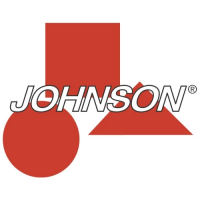CHARGING SYSTEM
TESTS
Charging System Check Chart
Where
to
Look
Cause
Battery defective or worn out
Low
electrolyte level
Battery
Terminal connections loose or corroded
Excessive
electrical load
Connections loose or corroded
Wiring
Stator
leads shorted or grounded
Circuit wiring grounded
Damaged stator windings
Alternator/stator
Weak
flywheel magnets
Damaged stator
leads
Rectifier Inoperative rectifier
Running Alternator
Output
Test
Disconnect battery cables at the battery.
Remove the rectifier
red
lead.
Wire a
0 to
40
A ammeter
in
series with the recti-
fier
red
lead
and
the wiring harness red lead.
m CAUTION m
Guard against any red wire, its terminals,
or
the ammeter coming in contact with
engine ground while the engine
is
run-
ning. Contact could cause arcing.
The outboard's battery should not be fully charged
when beginning this test. Connect the battery
cables and
run
the outboard
in
a test tank. Refer
to the output curve to determine the correct out-
put-to-RPM ratio.
• If there
is
no
output or the output
is
not correct,
refer to
Stator Resistance Tests on
p.
86
and
Rectifier Resistance Tests
on
p.
87.
ELECTRICAL
CHARGING SYSTEM TESTS
Procedure Reference
Check condition and charge
Add water and recharge
Accessories Service
Clean and tighten
Manual
Evaluate
accessory loads
Running alternator out-
Clean and tighten
put test; Stator resis-
tance test
Perform ohmmeter tests
Stator resistance test
Perform ohmmeter tests
Perform ohmmeter tests Stator resistance test
Perform running output tests
Running
alternator out-
put test
Perform ohmmeter tests
Stator resistance test
Perform rectifier tests
Rectifier resistance
tests
5 Amp Stator
6
5
4
AMP 3
2
1
o
L
./
~I'"'"
~
v
o
500
1500
2500
3500
4500
5500
RPM
9.9115
Model
5
4
AMp
3
2
1
4 Amp Stator
i"""
i"""
".
i"""
i"""
i"""
DRC4809
I..
I;""
,
.-
o 0
1000
2000
3000
4000
5000
6000
RPM
25/30
Model
DRC1153
85
E
o
U
Qj
)(
~
Qj
~
ii
E

